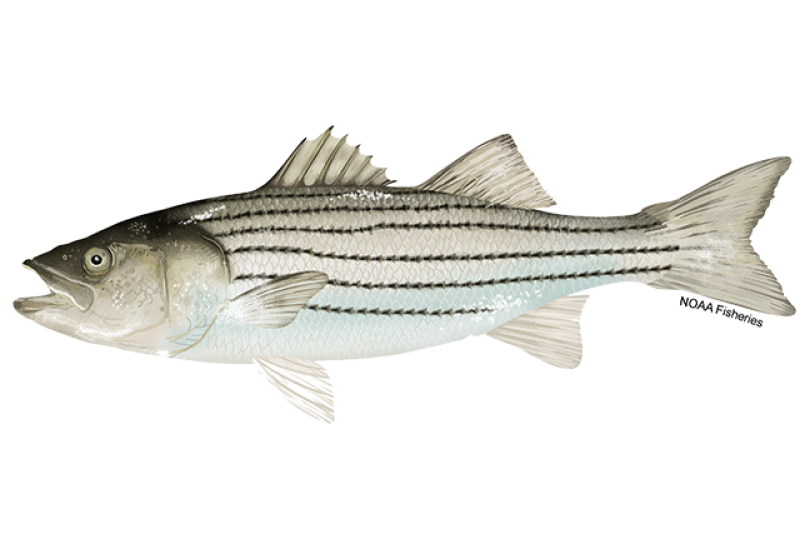New policy kicks in on Saturday, May 27
The Rhode Island Department of Environmental Management (DEM) is announcing that it has set Saturday, May 27, as the date it will implement a maximum size limit of less than 31 inches for striped bass recreational fisheries.
According to the ASMFC interstate fisheries management plan, DEM will be filing this new state regulation. DMF is working with other New England states to align the rule change at the same time throughout the region.
The implementation date of May 27 is the product of working with neighboring states to provide complementary rules for improved sustainability of the stock and enforceability of the measures.
That said, DMF strongly encourages anglers fishing in the waters of neighboring states to check the regulations for that state before their trip because they must follow the rules of where they are fishing along with where they launch from or return to.
In other words, the most restrictive rules apply. States must implement
measures that comply with the ASMFC action no later than July 2, 2023 – or risk
being found out-of-compliance and having a full harvest moratorium enacted.
“The goal of the emergency action by the ASMFC Striped Bass Management Board is to help preserve the 2015 year-class,” said DEM Marine Fisheries Chief Dr. Conor McManus.
“With what appears to be
poor year-classes in recent years, it is imperative to help preserve the
spawning stock as best as possible to rebuild the striped bass population.”
The basis for the ASMFC’s emergency action was that so many more striped bass were caught recreationally in 2022 than were expected that the current plan to ensure striped bass remain plentiful for years to come no longer appeared viable.
The main reason for the increase in harvest was that some striped bass from the abundant 2015 year-class — those fish born in 2015 — had grown enough to be harvested under the 2022 “slot limit” (28 inches to more than 35 inches long).
Like people, fish grow at different rates and in 2023, the 2015 year-class would be entirely recruited into this size range. This means they would all be available for harvest if the slot remained 28 inches to more than 35 inches, suggesting the potential for even greater recreational harvest in 2023 without swift action to change the slot limit.
The 2015 year-class is important to the future of Atlantic striped bass because it is one of the few large year-classes that has been produced in the past 20 years.
With fewer surviving striped bass born in the years before and
after 2015, it is important for as many bass from the 2015 year-class to grow
to spawning size and have as many chances to reproduce (and hopefully create
more strong year-classes) as possible if striped bass stocks are to recover in
coastal waters.
For more information on DEM programs and
services, visit www.dem.ri.gov. Follow DEM on Facebook, Twitter (@RhodeIslandDEM), or
Instagram (@RhodeIsland.DEM).
